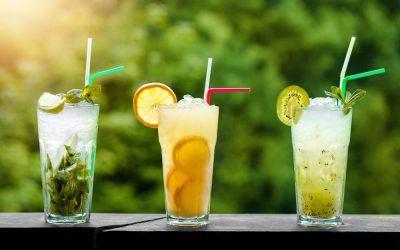Content
Low blood sugar and alcohol can both cause symptoms like blurred vision, slurred speech, sedation, and impaired coordination. Alcohol can cause your blood sugar levels to drop significantly, which can lead to loss of consciousness or blackout. Common symptoms of low blood sugar include nervousness, dizziness, sweating, hunger, and heart palpitations. However, as we went over earlier, the effects of alcohol are often similar to the effects of low blood sugar, making it difficult for the person to realize their blood sugar levels are low.
Questions about blackouts during routine medical visits could serve as an important simple screen for the risk of alcohol-related harms. Alcohol use disorders (AUDs) can have a profound, negative impact on a person’s ability to function in their personal and professional lives. The added difficulty of a medical condition like diabetes only makes this worse and can greatly harm both physical and psychological health. Excessive alcohol, however, or chronic alcohol use can have several dangerous effects in the body of diabetics and nondiabetics alike.
What is considered 1 drink?
If you did have large ketones, and you’re unable to keep fluids down, you should call 911 or ask a friend to drive you to the emergency room. The only way to safely rebalance your hydration, blood sugar, and ketone levels is an intravenous bag of saline, electrolytes and possibly glucose and insulin. Harris wants to remind us all again to keep track of how many drinks we’ve had, too, because the more you drink, the more work your liver has to do to process that poison.
- For many people, low blood sugar (hypoglycemia) is a blood sugar level below 70 milligrams per deciliter (mg/dL), or 3.9 millimoles per liter (mmol/L).
- Take a look at the numbers and you’ll find that only moderate drinkers have less cardiovascular disease.
- We send out a weekly newsletter with the latest posts and recipes from Diabetes Strong.
- While women tend to reach a higher peak BAC faster than men—mostly because they usually weigh less than their male counterparts—binge drinkers are also at risk for blackouts.
But because diabetes causes the blood vessels to narrow or constrict, blood flow is impaired, and less oxygen reaches the wound, causing the healing process to take longer. Additionally, elevated glucose levels decrease the ability of red blood cells to carry nutrients to the wound, limiting the effect of white blood cells in fighting infections. Drinking alcohol carries the same health risks for people with diabetes as it does in otherwise healthy people. But there are certain risks related to having diabetes that are important to know.
Effects of Alcohol Consumption in the Fed State
An intervention from loved ones can help some people recognize and accept that they need professional help. If you’re concerned about someone who drinks too much, ask a professional experienced in alcohol treatment for advice on how to approach that person. Unhealthy alcohol use includes any alcohol use that puts your health or safety at risk or causes other alcohol-related problems. It also includes binge drinking — a pattern of drinking where a male has five or more drinks within two hours or a female has at least four drinks within two hours. Alcohol use disorder is a pattern of alcohol use that involves problems controlling your drinking, being preoccupied with alcohol or continuing to use alcohol even when it causes problems.
Those enzymes are secreted directly into the gut to ensure effective food digestion. Two of the hormones (i.e., insulin and glucagon) are potent regulators of blood sugar levels. Both hormones are produced in areas of the pancreas called the Islets of Langerhans, which, quite literally, are “islands” of hormone-producing cells in a “sea” of digestive enzyme-producing diabetes and alcohol blackouts cells. Among other cell types, the Islets of Langerhans include an inner core of insulin-producing beta cells surrounded by a layer of glucagon-producing alpha cells. Because blackouts tend to occur at high BACs, they commonly stem from binge drinking, defined as a pattern of drinking that increases a person’s BAC to 0.08 percent or higher.
Check your blood sugar before, during, and after drinking
The bottom line is that any person with diabetes who wishes to consume alcohol should first discuss it with a doctor. It acts by inducing an unpleasant physical response (e.g., nausea and vomiting) after alcohol consumption. 3A standard drink contains 12 grams (approximately 0.5 ounce) of pure alcohol. This amount is equal to one 12-ounce bottle of beer or wine cooler, one 5-ounce glass of wine, or 1.5 ounces of distilled spirits.

During this epileptic episode, people lose consciousness, and the body goes stiff (tonic phase). The muscles then contract, which may result in the jaw clamping shut (clonic phase). Many different symptoms could accompany epileptic blackouts, depending on the type of seizure that a person is experiencing. If you have diabetes, you should be aware of the other health risks around drinking. That way, you can help to avoid them by limiting how much you drink.
Even if you don’t have ketones, repeated puking and the inability to keep water down means you need to get to the emergency room quickly. It’s not a fun part of life with diabetes, but it’ll keep you alive. And avoid (or be prepared to manage insulin around) choices like dessert wines (Moscato, Zinfandel, some rose, and some rieslings), alcoholic ciders, and cocktails mixed with tonic, sour mix, juice, and soda. The more you drink, the more hours it takes for your body to deal with all of that alcohol. Then, take notes on what happens so you have a reference for next time.
France at medium risk of power cuts in December, says regulator – EURACTIV
France at medium risk of power cuts in December, says regulator.
Posted: Tue, 22 Nov 2022 08:00:00 GMT [source]

최신 댓글